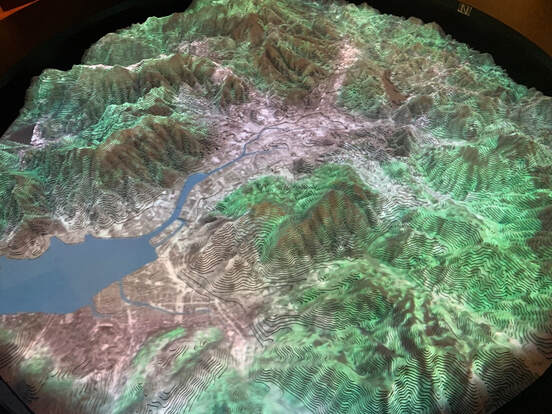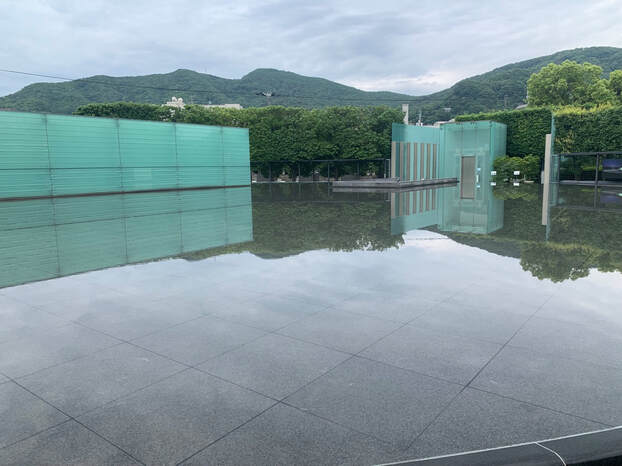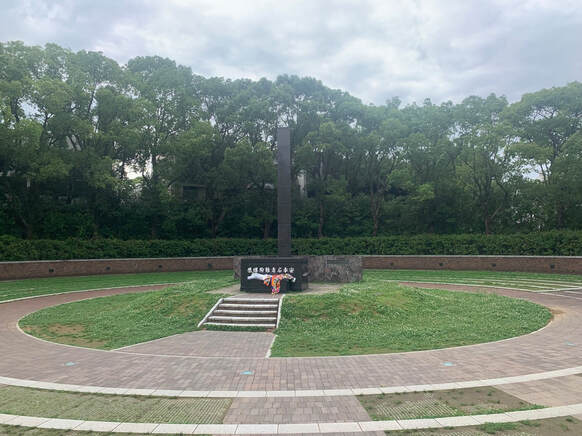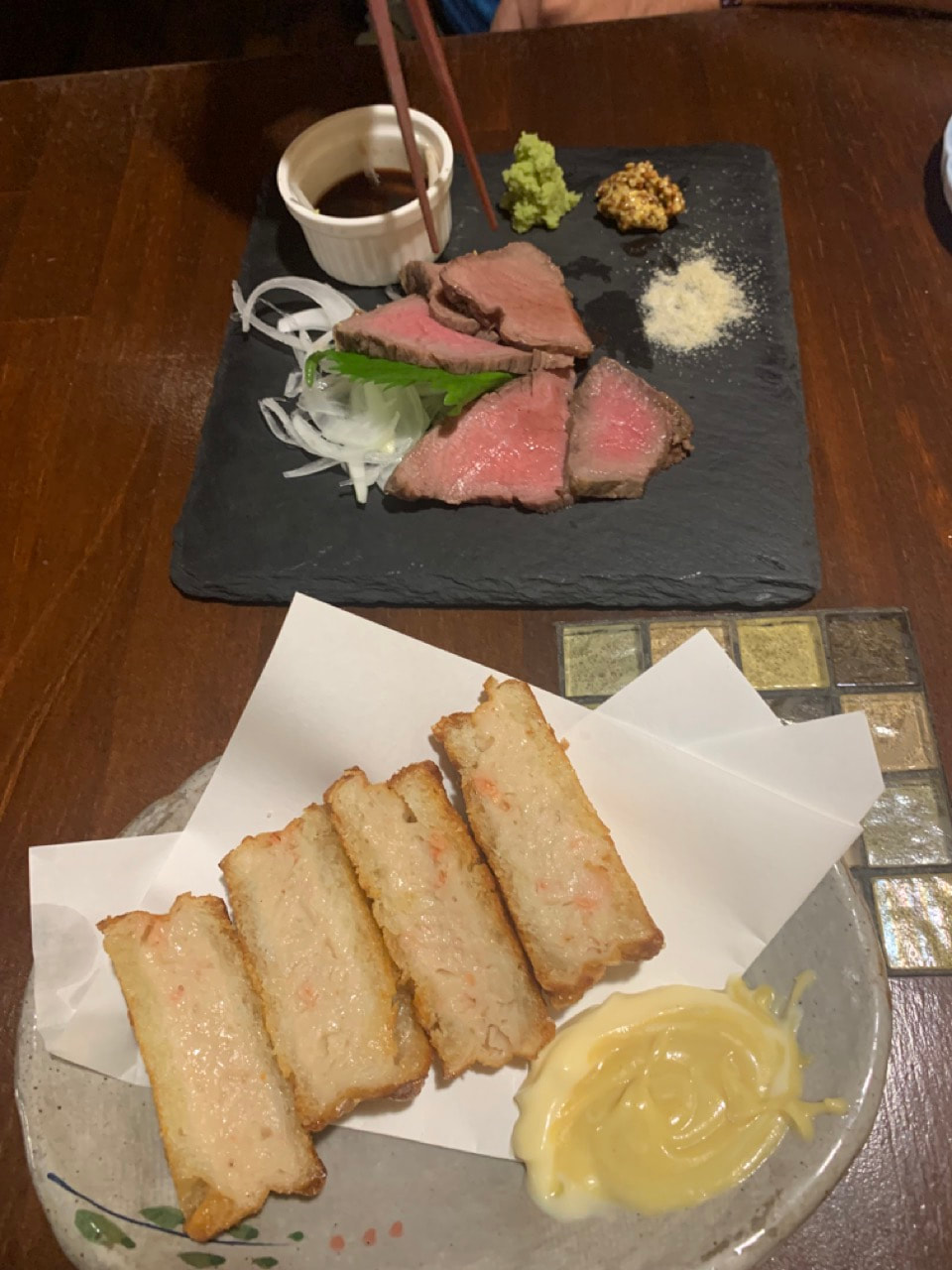Ahhh, our last breakfast at the hotel in Hiroshima - we head to Nagasaki today.
Our chariot arrives - the bullet train so swift it's almost like flying close to the ground, and through many tunnels.
We arrive with plenty of time before checking into the hotel to start our tour of Nagasaki, starting with the Nagasaki Atomic Bomb Museum. The museum is a remembrance to the atomic bombing of Nagasaki on 9 August 1945 at 11:02:35 am. This is the counterpart to the Hiroshima Peace Memorial Museum, although the Nagasaki version has a much more diverse presentation with exhibits of large artifacts and extensive information about nuclear weapons. Both locations create an impacting context of the nuclear age, remind visitors of the vast destruction and indiscriminate death caused by nuclear weapons, and encourage a commitment to peace. The Nagasaki museum was completed in April 1996, replacing a deteriorating International Culture Hall.
The museum offers a convenient locker storage where we stowed our bags while visiting the site.
The museum offers a convenient locker storage where we stowed our bags while visiting the site.
We saw this amazing sight at the entrance to the museum.
A clock from a home destroyed at the instant of the explosion.
These are structures retained from the city's wreckage and now on display.
Some remains of the 1925-built Immaculate Conception Cathedral/St. Mary's Cathedral, also called Urakami Cathedral, are on display and give some impression of the immense destruction to present day viewers.
Here are other artifacts dropped from U.S forces aircraft - leaflets warning of the impending bombing, and data collection devices, sending by radio signals, information about the explosion as it was happening. Found by Japanese residents after the bombing, they were given to Japanese investigators and eventually to the museum.
Nagasaki is nestled in amongst mountainous terrain (much of Japan is mountainous).
Model of the Fat Man bomb dropped on Nagasaki - the same design tested in the initial blast test at Trinity Site New Mexico, and differing from the gun-type bomb used in Hiroshima.
This display illustrates the world's nuclear detonations, tests save for WWII Japan. Within the United States, they were mostly done in Nevada, with the one, the first, in New Mexico, and yes, there were two deep underground in Mississippi, about 100 miles NNE from New Orleans, wow!
Students looking at a display showing nuclear weapons stockpiles around the world.
Next to the museum is the Nagasaki National Peace Memorial Hall for the Atomic Bomb Victims, built in 2003.
As viewed from the outside, the top of the memorial consists mainly of a tree-lined basin of water through which the 12 pillars of light continue to rise from below. At night, 70,000 fiber optic lights are illuminated across the surface of the water, symbolizing the victims.
Ground zero monolith - the bomb detonated 500 meters (about 1500 feet) above this point.
Lines from a poem by Sachiko Yamaguchi, who was nine at the time of the bombing, are carved on a black stone plaque in front of the fountain. "I was thirsty beyond endurance. There was something oily on the surface of the water, but I wanted water so badly that I drank it just as it was."
Remnants, the foundation, of a prison on a rise adjacent to ground zero. Not really a counterpart to Hiroshima's Atomic Dome, but still displaying in-place ruins resulting from the bomb - the only ruins we saw here.
"The 10-meter-tall Peace Statue created by sculptor Seibo Kitamura of Nagasaki Prefecture. The statue's right hand points to the threat of nuclear weapons while the extended left hand symbolizes eternal peace. The mild face symbolizes divine grace and the gently closed eyes offer a prayer for the repose of the bomb victims' souls. The folded right leg and extended left leg signify both meditation and the initiative to stand up and rescue the people of the world. The statue represents a mixture of western and eastern art, religion, and ideology. Installed in front of the statue is a black marble vault containing the names of the atomic bomb victims and survivors who died in subsequent years."
Air raid shelters, at the base of the prison hill where a few indeed survived the bomb - following the war US investigators examined them to determine their effectiveness, especially with their close proximity to ground zero.
During fairly recent excavations, rubble was discovered containing articles of everyday life from the period right up to the bomb's detonation. They created a display port showing it lying where they found it.
Now checking into our hotel - Gerri's takes note of complimentary noodles offered after 930 tonight.
There's other info providing very detailed information about what happens during tomorrow's breakfast buffet.
We then found a very inviting izakaya (tavern) with some very nice tapas-type plates for dinner.




































 RSS Feed
RSS Feed
